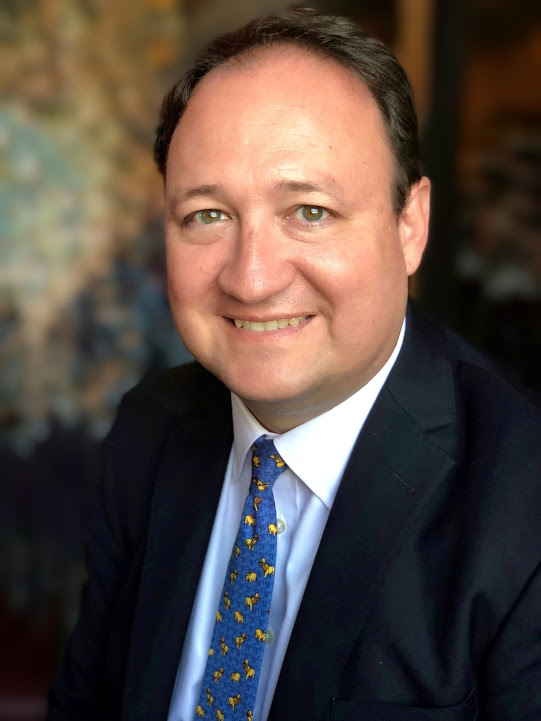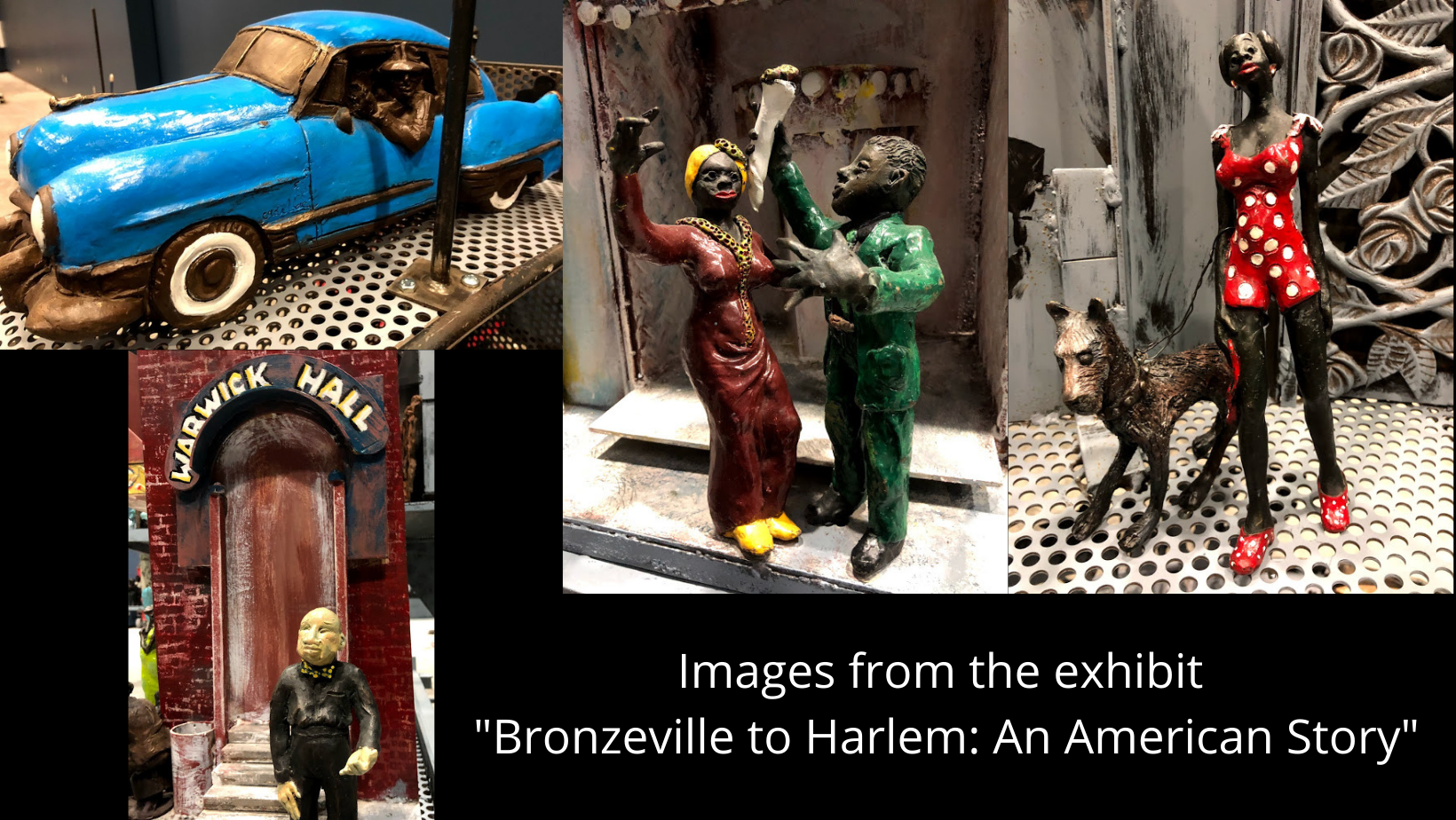Three Questions Q&A with John Morris, President & CEO, Peoria Riverfront Museum
The Project…

Funded by Illinois Humanities
Project: “From Bronzeville to Harlem: An American Story,” created by artist Preston Jackson
Location: Peoria, Illinois
The Peoria Riverfront Museum has been selected as the permanent home for Preston Jackson’s “Bronzeville to Harlem: An American Story.” As noted by the artist, “The visual history depicted in this piece and its content are like a guiding light to the present and on into the future. Diversity is the key.” Measuring over 1,000 SF, this piece will serve as the foundation for history learning for both our family visitors and school groups. Brought to life with lighting and an audio narration by actors and the artist, the piece will provide an immersion experience for visitors into American migration.
The Organization…
Peoria Riverfront Museum
The Peoria Riverfront Museum (PRM), which opened on October 20, 2012, is the largest private museum in downstate Illinois, and is an affiliate of the Smithsonian Institution. The Museum has been accredited by the American Alliance of Museums since 1973. The mission of the Peoria Riverfront Museum is “To inspire lifelong learning for ALL: connecting art, history, science and achievement through collections, exhibitions and programs.”
Follow @riverfrontmuseum: Website | Facebook | Instagram | YouTube
The Q&A…

John Morris, President & CEO, Peoria Riverfront Museum
Q1: How do you see the arts/culture/humanities as being essential?
The arts, as in liberal arts, culture and humanities are core to our mission, as the only multidisciplinary museum of our kind in the nation. The Peoria Riverfront Museum is a community of visionary people who are dedicated to building confidence, inspiring learning, and unleashing the full talent and genius of every individual. We do this through providing quality content based on our unique pillars of art, science, history and achievement.
It’s amazing just how multidisciplinary we are as human beings. The creative type might lean more toward the visual and performance arts, and the so-called “science geeks,” toward astronomy and natural history. But the challenge is increasing the appreciation – and hunger – of the general public for higher cultural learning, which is key to building confidence.
We’ve found that most people are comfortable watching a film, listening to music or enjoying something to read. So, we use that opportunity and build upon it by taking favorite films, for instance, and going in-depth about them in an inspiring way, as we do with the popular Art of Film series. We build their interest and comfort level and leave them wanting more. We stoke the hunger for higher cultural aspirations – including museums!
In this way, what we do as a museum is to align with people, by not just meeting their needs, but by exceeding their expectations. Most people are not limited to one box or another. We live in a free society and we’ve been bequeathed with a system where we govern ourselves, and we all have to deal with art, with science, with the telling of the historical perspective. That’s why I think museums are vital to the building of our civil society.
Q2: What is the most important thing people should know about your work?
Uniqueness and reach. We closed on March 14th, prior to the mandatory closure here in Illinois, and later reopened July 1st. But on that day in March, we had a full staff meeting, and we said we basically have two choices: we can just hunker down and weather the storm, or we find another way to do what we’re supposed to be doing: Inspiring people and being inspired by others. So right off the bat we launched at least 10 digital programs, many of them weekly recurring “shows,” and we created and branded the Virtual Peoria Riverfront Museum (VPRM).
Programs ranged the gamut from self-produced by staff using their cell phone to higher quality productions done with a donor-purchased high-end video system. We started taking our collections objects out of the vault, and sharing them with the community. One example was the bronze castings of Abe Lincoln’s hands. We’ve been using all the social media platforms, especially Facebook, Instagram and YouTube, as well as email – sending literally thousands of emails to museum members each week.
Our virtual museum ended up going viral and was covered by several news stories, including two by the Pulitzer Center.
Just the other day, I ran into someone at the dentist’s office. They said “we’ve been enjoying the museum so much,” and then proceeded to describe in detail all the exhibitions going on. And they hadn’t been to the actual building all year! We’ve been able to continue to engage our stakeholders by transforming who we are. And we’re not going back.
Our reach is fortified by hosting truly unique exhibitions. For example, we happen to be the foremost repository of a unique American art form, duck decoys, which are arguably, alongside jazz, the only unique American art form. Decoys date back 2,000 years to the native Americans. We are home to the Center for American Decoys, focused on Illinois River valley artists. It’s fascinating to see just how interested our Peoria schools students are by these decoys. I think people of all ages are drawn to that human, practical, self-driven creativity.
Q3: Who makes your work possible?
We’re a private nonprofit organization, totally dependent on donations. Thus far, into the halfway point of the fiscal year, we’re experiencing an unbelievably successful year. We’ve managed to stay on budget, despite dramatic shortfalls in earned revenue such as the gallery and sales. But the donor base is stepping up to the $1,000 and $2,500 level. One person sent us a check for $10,000. The generosity of our supporters is remarkable.
We brought in a Whitney Museum exhibit with Alice Walton’s Art Bridges Foundation. Alice Walton is putting lots of money into smaller museums to help bring in top exhibitions of American art. We were the first to partner with Art Bridges and the Whitney to bring in “Vantage Points,” a contemporary photography exhibit. It was special to see how students reacted and contemplated a world class survey of a pivotal piece of contemporary photographic history, from Andy Warhol Polaroids to Avedon’s great Western landscapes. We have amazing photographs these students so excited to see the creativity and appreciative of the opportunity – and in turn feeling freer to be creative themselves.
Again, we’re driven by our experience that the museum is not a building, or a collection. It is the people we serve, and what they have given us – the ability to keep the community together.
Anything else you’d like to add?
One of our major initiatives continues to be digital communications, and we’re growing how we communicate with the community, experimenting with live shows, produced shows and shows that take place out in the community. We have staff who take photos and video, create stories and post on Facebook, Instagram, YouTube and even Tik Tok. We’re currently building a new website and app. So, I’d argue that we may have become one of the top 10 communication organizations in Central Illinois, always with the mission to lift up our community through inspirational storytelling.
About The Illinois Humanities Grantee Partner Spotlight
Illinois Humanities highlights the work of our Community Grants program partners through our “Grantee Spotlight.” It shines the light on our grantee partner’s work, offering details about the organization and the funded project, as well as a Q&A with a team member at the organization. More: ILHumanities.org/Spotlight
About Illinois Humanities
Illinois Humanities, the Illinois affiliate of the National Endowment for the Humanities, is a statewide nonprofit organization that activates the humanities through free public programs, grants, and educational opportunities that foster reflection, spark conversation, build community and strengthen civic engagement. We provide free, high-quality humanities experiences throughout Illinois, particularly for communities of color, individuals living on low incomes, counties and towns in rural areas, small arts and cultural organizations, and communities highly impacted by mass incarceration. Founded in 1974, Illinois Humanities is supported by state, federal, and private funds.
Learn more at ilhumanities.org and on Facebook, Twitter, Instagram, and LinkedIn @ILHumanities.
